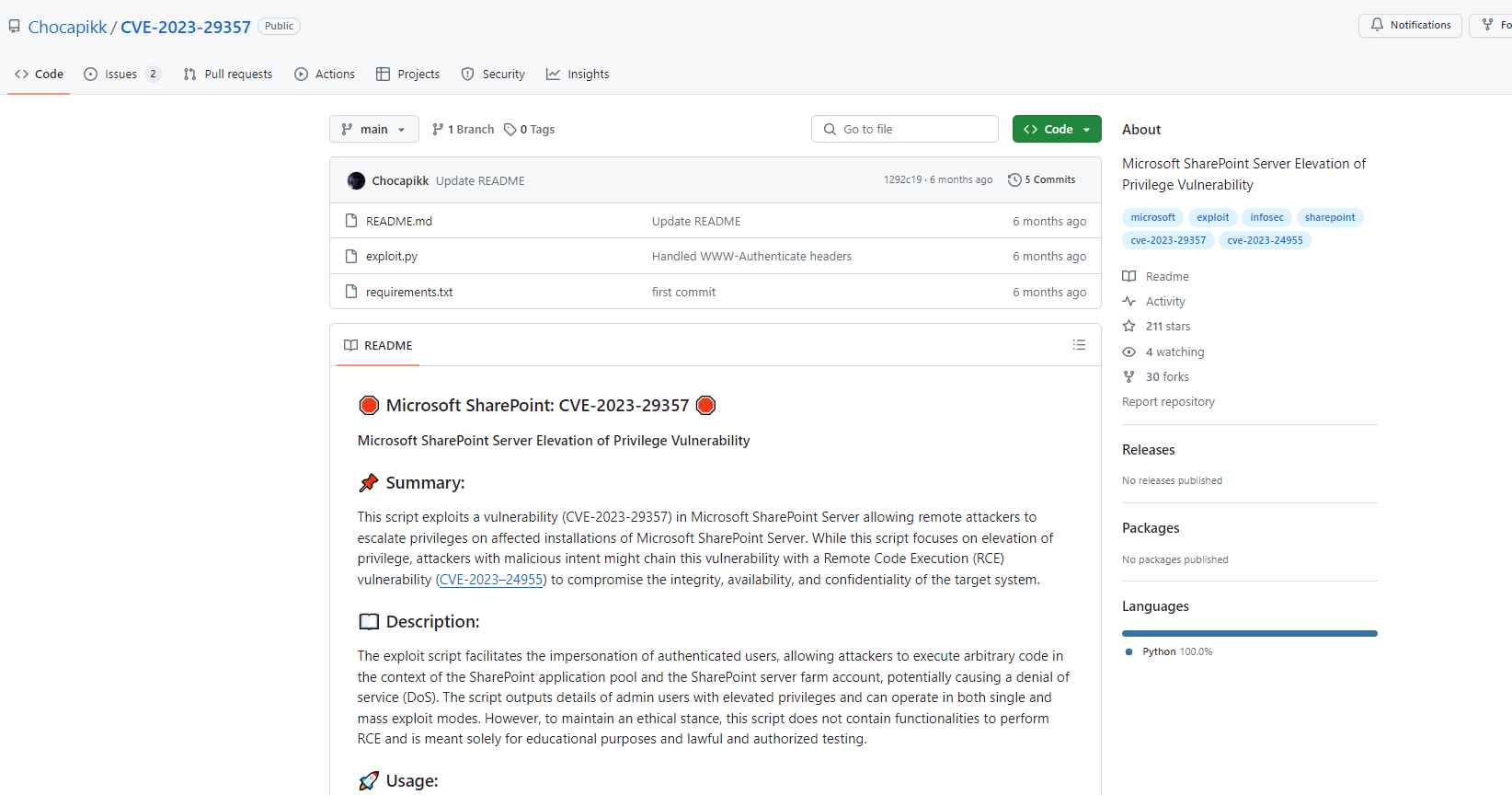In a significant development in the realm of cybersecurity, two critical vulnerabilities in Microsoft SharePoint Server, identified as CVE-2023-24955 and CVE-2023-29357, have been brought to light, underscoring the persistent threat landscape that organizations navigate.
CVE-2023-29357: The Elevation of Privilege Menace
CVE-2023-29357, a critical elevation of privilege (EoP) vulnerability, has been assigned a CVSSv3 score of 9.8, marking it as a severe threat. This vulnerability permits attackers to escalate their privileges within Microsoft SharePoint Server, potentially allowing unauthorized access to sensitive data or the execution of malicious code. The significance of this vulnerability is highlighted by its inclusion in exploit chains targeting Microsoft SharePoint Server. By exploiting this flaw, an unauthorized actor can achieve elevated privileges, granting them the ability to execute commands and access resources on the SharePoint server that are normally restricted. This could lead to the compromise of the entire server, data theft, or deployment of further malicious activities within the targeted network. The CVSSv3 score of 9.8 underscores the critical nature of this vulnerability, highlighting its potential for significant impact on affected organizations.
CVE-2023-24955: A Companion Threat
While CVE-20h23-29357 has captured significant attention, CVE-2023-24955 emerges as a companion threat in the exploit chain targeting Microsoft SharePoint Server. Details on CVE-2023-24955, including its specific nature and impact, underscore the complexity of the security challenges posed by these vulnerabilities.
The exploit chain for CVE-2023-29357 involves manipulating the SharePoint server into executing arbitrary .NET code. This is achieved through crafted requests that exploit the vulnerability, bypassing the intended security mechanisms of SharePoint. The specific technical details of the exploit involve the manipulation of internal SharePoint data structures, a technique that requires sophisticated knowledge of both SharePoint and .NET internals.
CVE-2023-24955: Companion Vulnerability in the Exploit Chain
While CVE-2023-29357 focuses on privilege escalation, CVE-2023-24955 complements this by potentially allowing an attacker to bypass authentication or perform unauthorized actions within the SharePoint environment. The details of CVE-2023-24955, including the specific mechanics of the exploit and its impact, further complicate the security landscape for organizations utilizing SharePoint. This vulnerability, when paired with CVE-2023-29357, creates a potent exploit chain that can lead to full system compromise under certain conditions.
The Hacker’s Playbook: Exploiting the Vulnerabilities
The revelation of these vulnerabilities has been met with swift action by malicious actors seeking to exploit them. Hackers are actively targeting Microsoft SharePoint Server by leveraging these security flaws. This aggressive exploitation emphasizes the urgency for affected organizations to apply mitigations and patches.
Official Responses and Mitigation Strategies
In response to these threats, cybersecurity agencies and Microsoft have issued advisories and patches. The Cybersecurity and Infrastructure Security Agency (CISA) has been particularly vocal, urging organizations to patch their systems promptly to prevent exploitation. Microsoft’s security response center has also provided guidance on mitigations and protective measures for organizations running SharePoint Server.
The cybersecurity community has rallied to understand and defend against these vulnerabilities. Researchers and practitioners have shared exploit scripts (GitHub) and detailed analyses (System Weakness), contributing to a collective defense strategy. These contributions are vital for organizations seeking to safeguard their environments against these emerging threats.

The discovery of CVE-2023-24955 and CVE-2023-29357 in Microsoft SharePoint Server serves as a stark reminder of the evolving cybersecurity threat landscape. As organizations grapple with these vulnerabilities, the importance of vigilance, timely patching, and community collaboration has never been more apparent. The ongoing efforts to mitigate these vulnerabilities underscore the collective commitment to cybersecurity resilience.
Information security specialist, currently working as risk infrastructure specialist & investigator.
15 years of experience in risk and control process, security audit support, business continuity design and support, workgroup management and information security standards.
